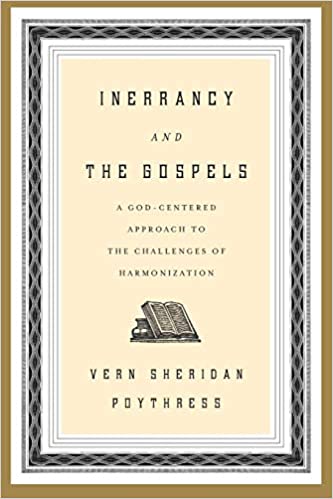A Brief Book Summary from Books At a Glance
by Steve West
Table of Contents
Part One The Challenge of Harmonization
1 Difficulties in the Gospels
2 An Example: The Centurion’s Servant
Part Two Principles for Harmonization
3 Initial Principles for Harmonization
4 History, Theology, and Artistry
5 The Historical Claims of the Gospels
6 The Authority of the Gospels
7 A Mental-Picture Theory
8 Truth in a Biblical Worldview
9 Truthfulness versus Artificial Precision
10 Variations in Writing History
Part Three Attitudes in Harmonization
11 Confidence and Doubt
12 Seeking God
13 Limitations in Human Knowledge
14 Intellectual Suffering
15 Positive Purposes for Difficulties
Part Four Special Issues in Harmonization
16 The Synoptic Problem
17 Temporal Order of Events
Part Five Individual Cases
18 Cleansing the Temple
19 The Rejection of Jesus at Nazareth
20 Cursing the Fig Tree
21 Commissioning the Twelve
Part Six Reporting Speeches
22 Stilling the Storm
23 Variations in Citations
24 Meaning and Intention
25 Speech When Jesus Stills the Storm
26 Augustine on Reporting Speeches
27 The Rich Young Ruler
Part Seven More Cases
28 Raising Jairus’s Daughter
29 Blind Bartimaeus
Summary
Part One: The Challenge of Harmonization
The early church recognized the Bible as the written word of God, and it was accepted as fully trustworthy. Today, this view of Scripture is sometimes rejected or questioned, and often apparent discrepancies between the Gospels are mentioned. Scripture identifies itself as the written, inspired word of God, and Jesus endorses the OT as God’s word. It is through the witness of the Spirit that we accept this biblical testimony as followers of the Lord Jesus Christ. Instead of defending inerrancy, this book examines how believers who accept the high view of Scripture should approach passages that seem to present difficulties. Our worldview matters enormously when it comes to interpreting Scripture, as well as in every other area of life.
An example of difference is found in the narrative concerning the healing of the centurion’s servant in Matt. 8:5-13 and Luke 7:1-10. Matthew does not mention any intermediaries between the centurion and Jesus, but Luke does. When there are parallel accounts we can first ask whether it is the same incident or merely similar incidents, but in this case, the details are too exact for it to be multiple incidents. It is possible that there are several stages, and the Gospel writers streamline them without being exhaustive. For this pericope, it is possible that the centurion first sent the elders of the Jews, then sent his friends, then came in person. This interpretation is possible, but it is not the only possibility. An alternative interpretation is that since the centurion authorized these people to represent him, their speech to Jesus on his behalf was the same as he himself speaking to Jesus. In a similar way, we might say that Pilate flogged Jesus, even though Pilate did so through the agency of the soldiers.
Since we are fallible, we can put forward plausible reconstructions, but they must always be subordinate to the Gospel accounts themselves. Since the material in the Gospels is carefully crafted, we should also ask what we learn from their unique and nuanced approaches. There may be areas of emphasis that emerge from selectivity in detail and presentation. The wider themes of the individual Gospels may also be highlighted by the way each episode is presented. For this account, Matthew emphasizes that the centurion is a Gentile, while Luke emphasizes his humility. These two emphases actually harmonize and complement each other perfectly, and we are better with both rather than one alone. . . .
[To continue reading this summary, please see below....]The remainder of this article is premium content. Become a member to continue reading.
Already have an account? Sign In
